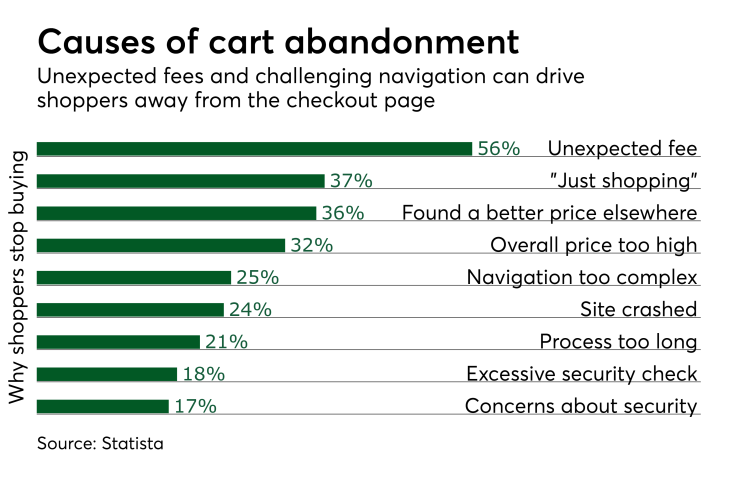Despite a flood of new technology options, e-commerce still hasn't cracked the code of convincing shoppers to complete their purchases once they arrive on the checkout page.
"Cart abandonment continues to be one of the biggest issues in e-commerce," said Richard Btaiche, product manager at the Ottawa-based Shopify, a multi-channel commerce platform provider.
Its solution is to replace much of the payment process with a six-digit PIN that calls up the account information a shopper has entered previously on Shopify's platform.

In each case, the company hopes to bring the consumer closer to making a payment without the typical friction associated with setting up an account at a merchant's site. That's the step Btaiche feels still hamstrings digital purchases, since consumers are turned off by having to enter information repeatedly, a process which hurts their perception of the overall shopping experience.
The PIN system, called Shopify Pay, replaces most of the keying that takes place at online checkout. Consumers enter a six-digit code, which completes the checkout for repeat purchases, instead of going through the much longer process of entering full checkout information.
"Entering six digits is a lot better than filling in 16 fields," Btaiche said, adding 59% of Shopify's orders in the first quarter came via mobile, placing an onus on efficiency in that channel; Shopify Pay enables users to enter shipping and payment information one time and opt-in to have that information saved for future purchases in Shopify's merchant network.
Another digital commerce company,
Shopify, which has made other moves around user experience in the past year such as collaborating with
"Enhancing the consumer experience is everything right now, especially when it comes to online checkout," said Rick Oglesby, president of AZ Payments Group.
Shopify Pay's not a mobile wallet, but more of an account-on-file system, Oglesby said. "In this case, the account-on-file becomes usable at multiple merchants at long as those merchants all use Shopify, similar to how Venmo Touch works with Braintree."
Shopify has also made an update to its in-store payment technology, introducing a $29 chip and swipe reader that connects wirelessly to Apple and Android phones and tablets. It's also giving away the readers to current Shopify merchants, with a focus on merchants selling at markets, pop-up stores, trade shows or small retail stores.
"One of our goals with the card reader was to make it easier to U.S. merchants using Shopify to become EMV compliant," said David Seal, a product manager at Shopify.





